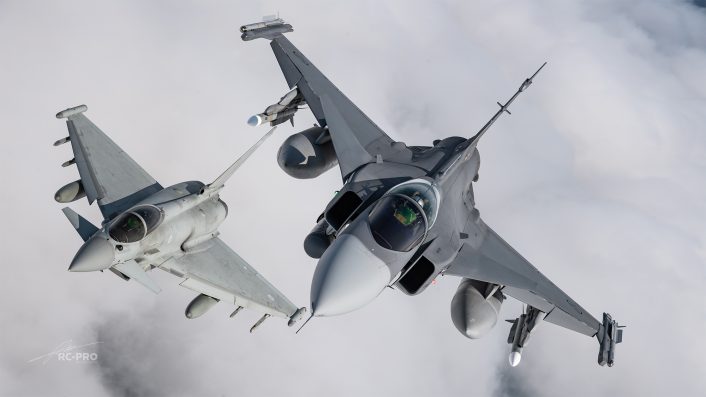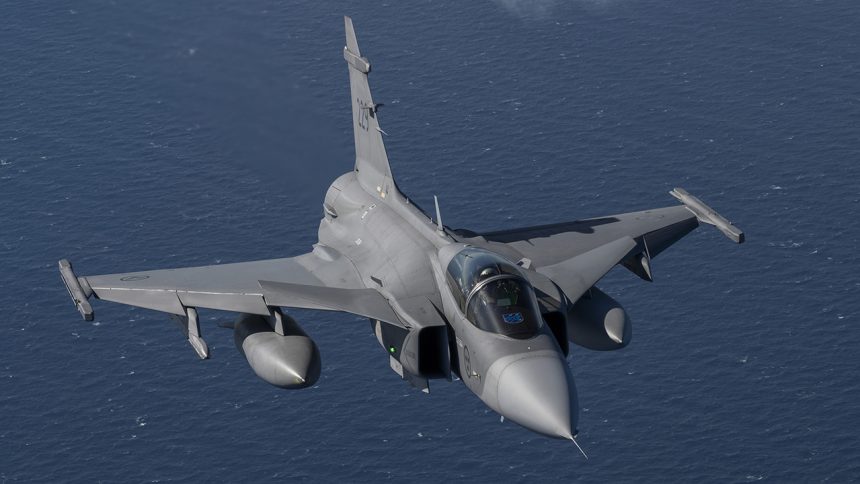While Ukraine has described Gripens as “expected,” Swedish officials have so far only stated that future sales could be discussed after the war, and no transfer has been confirmed yet.
Ukraine’s Deputy Defense Minister, Lieutenant General Ivan Havryliuk, has said that Swedish-made JAS 39 Gripen fighter jets are among the Western aircraft “expected” to reinforce the country’s air force.
Speaking to the BBC, Havryliuk was asked whether Ukraine is anticipating deliveries of F-16s, Mirage 2000s and Gripens. “You have named the correct list, but I will not go into details on what, when, and how,” he replied. Pressed further, he repeated that additional deliveries of F-16s, Mirages and Gripens are “expected,” adding only: “When you see them in the air over Ukraine, then you will understand.”
“#Ukraine’s Deputy Defense Minister, Lieutenant General Ivan Havryliuk, confirmed that Swedish-made #Gripen fighter jets are now part of the expected Western aircraft supply to Ukraine.”
Src: United 24 https://t.co/cC6Sc3uKCM
BBC Ukraine (G-Transl Pic) https://t.co/Hbliny7LpR pic.twitter.com/ShsRU837OY
— Gripen News (@GripenNews) September 29, 2025
This is the first time a senior Ukrainian official has openly included the Gripen in Kyiv’s list of incoming aircraft. However, there has been no confirmation from Stockholm that the jets will be transferred. Earlier this month, Swedish Defense Minister Pål Jonson said Sweden was open to discussing Gripen sales only after the war ends, a position that appears to contradict Havryliuk’s remarks.
Analysts suggest the Deputy Minister may have been alluding to future post-war agreements rather than imminent deliveries, leaving significant uncertainty around the timing and scope of any Gripen transfer.
Even if Sweden were to green-light the supply, training and certification hurdles remain considerable. The F-16 program has already demonstrated that it takes many months to prepare pilots and ground crews for a Western 4th generation platform. The Gripen, while designed to be easier to maintain and operate, would still require a dedicated training pipeline. Without diverting pilots from the F-16 program, achieving operational Gripen squadrons in very short time appears unlikely.
Logistics present an even greater challenge: the addition of yet another type would make the Ukrainian fleet even more heterogeneous, with each aircraft requiring its own supply chain and technical support. This is not unprecedented, as countries like Greece, Egypt or India operate several different fighter types, but it remains a highly complex task, especially for a nation at war. Still, it could be considered acceptable given Ukraine’s constant need for additional assets.

That being said, the Swedish fighter has long been considered a perfect candidate for Ukraine, thanks to its ability to perform dispersed operations from roads and unprepared runways in isolated locations with minimal support. Despite its relatively small logistical footprint, Saab’s multirole jet is equipped with advanced electronic warfare systems, jam-resistant radars and NATO-compatible weapons (by the way, it would be interesting to know whether the supposed “package” includes additional air-to-air missiles, such as the Meteor Beyond Visual Range Air-to-Air Missile).
In 2023, Ukraine requested the permission for pilots and technicians to evaluate operationally the Gripen as one of the measures to strengthen the country’s air defenses until a final decision on the F-16 arrived. Sweden agreed and granted the possibility of orientation training on the Gripen for the Ukrainian personnel, and on Sept. 14, 2023, Swedish Defense Minister Pål Jonson said, in a written statement, that Ukrainian pilots were allowed to test fly the Gripen.
“The orientation training has been completed and according to the report I received from the Armed Forces , the training went well,” he said in the statement, back then.
For now, the Gripen remains an “expected” capability rather than a confirmed one. Havryliuk’s remarks underscore Ukraine’s push to secure additional modern fighters (including more examples of the Western types already transferred, like the F-16 and Mirage 2000), but it is still unclear whether Swedish jets will actually enter service during the war.










